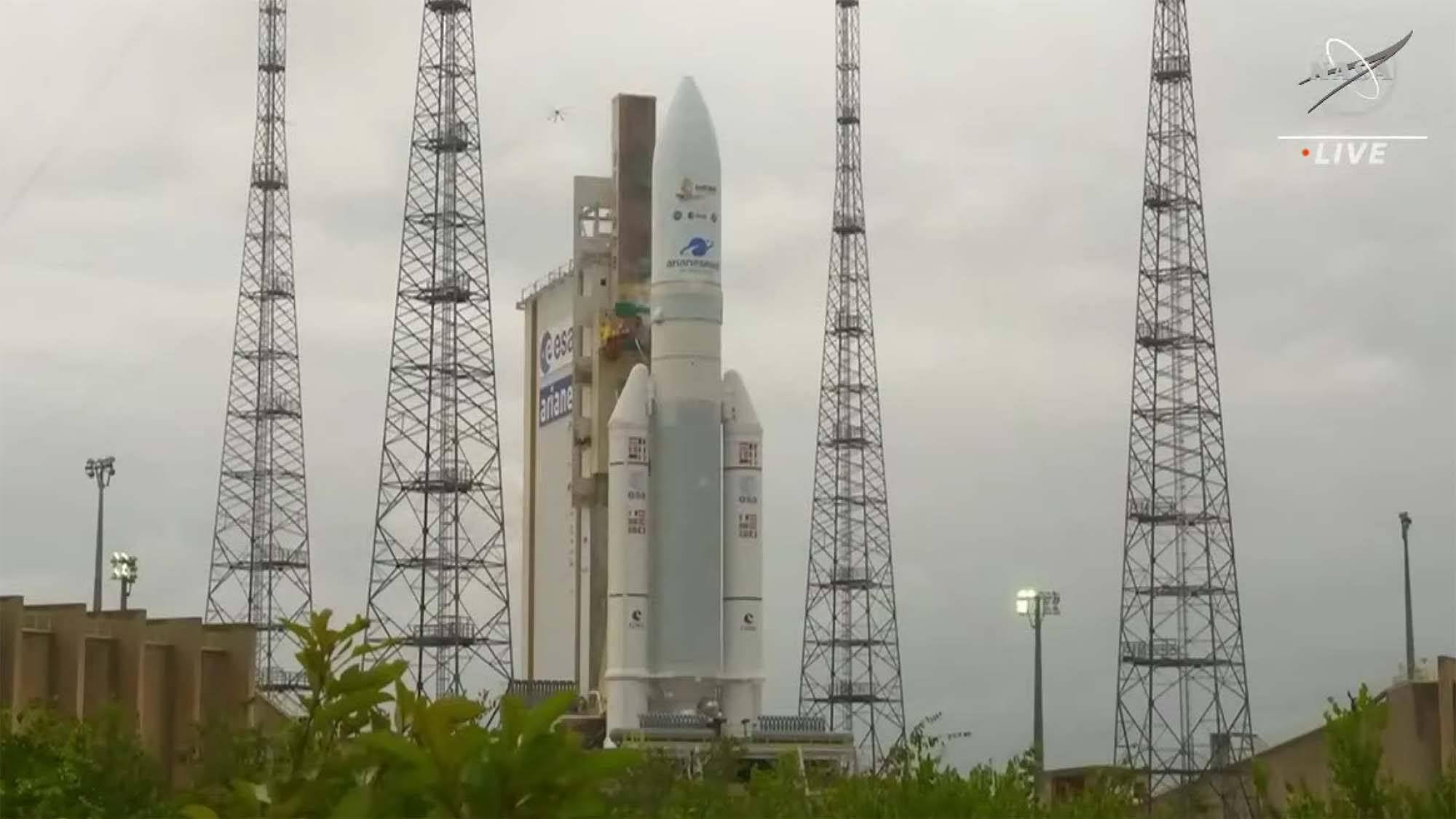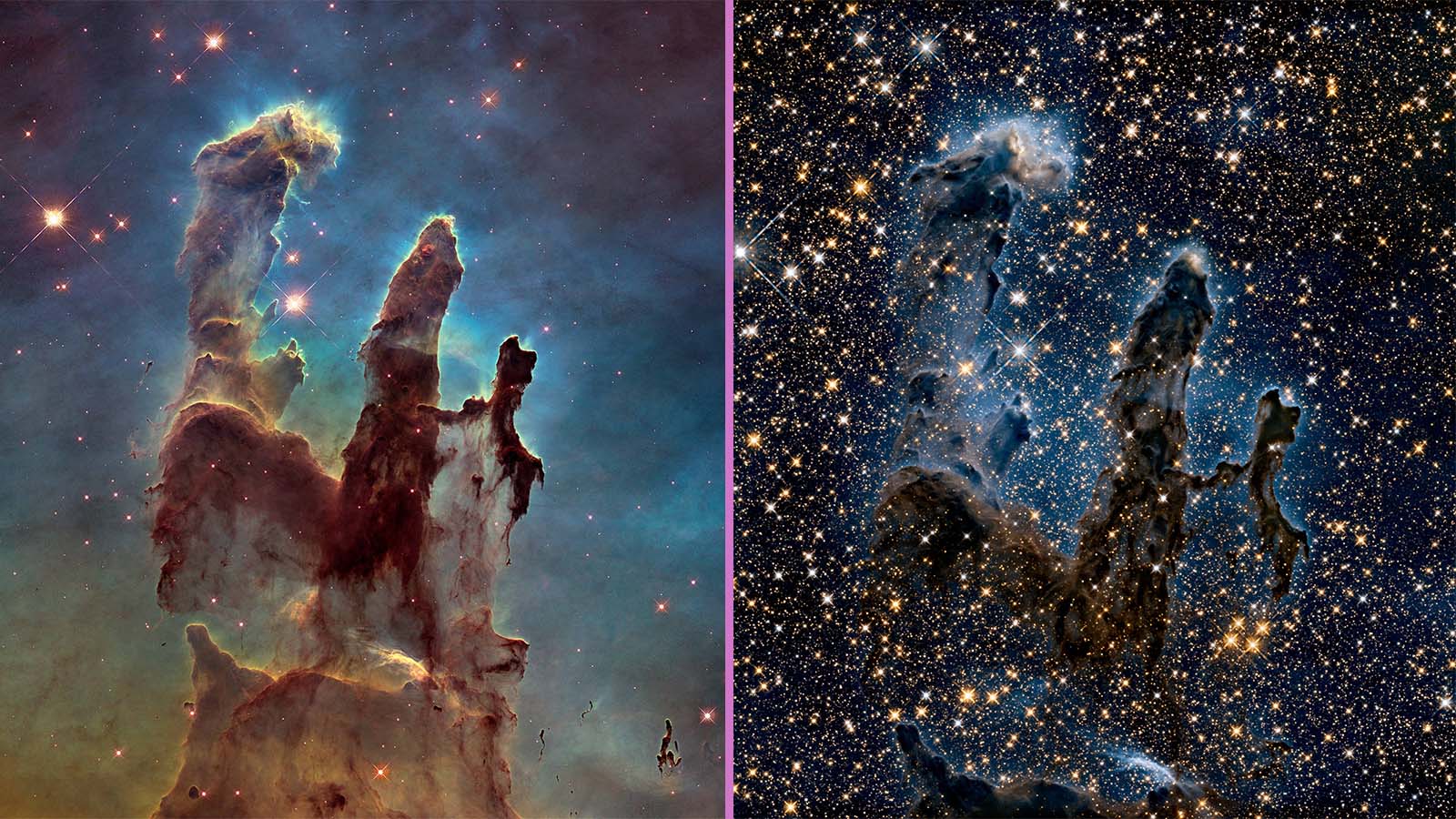Today is launch day for the James Webb Space Telescope aboard Arianespace’s Ariane 5 rocket, and we're covering all the latest updates as the mission counts down to its anticipated 7:20AM EST lift off.
The James Webb Space Telescope is the next generation observation platform and the successor to the Hubble Space Telescope. Built to detect deep into the infrared spectrum, the James Webb Space Telescope will be able to see deep into the history of the universe.
The oldest galaxies and stars from the very beginning of the universe can only be seen in this deep infrared space, so there's no telling what we'll see once Webb is online and operational.
After its successful launch, it will take 29 days for Webb to fully deploy at the second Lagrange point relative to Earth and the Sun, known as L2, a location about 1 million miles (1.5 million kilometers) away from us.
Here, the larger universe will be far more visible to Webb than if it was located in low Earth Orbit like the Hubble Space Telescope, but it is also a far more complex deployment than Hubble was.
Essentially, if something physically goes wrong during the deployment, there's no way to recover and the $10 billion dollar instrument will be effectively useless. The 29 days until Webb completes its maneuvers and deploys at L2 will be some of the most intense and stressful time in recent memory for NASA, possibly since we first sent astronauts to the Moon in 1969.
And it all begins in just a few hours, and we'll be here to keep you updated on the entire launch and deployment as it happens.
Welcome to TechRadar's James Webb Space Telescope launch live blog! This is John, TechRadar's resident science geek, and I obviously can't tell you how excited we all are for this launch.
It truly is a historic moment for NASA, as this is absolutely one of the most complex space missions it has ever undertaken. There are nearly 350 single points of failure where the entire mission can collapse and we essentially have a $10 billion derelict flying off into space after nearly two decades of work.
Needless to say, these next 29 days are going to be the proverbial month from hell, and I know I for one will be following Webb's progress for the next four weeks and keeping you all updated as we go.
Merry Christmas to one and all, by the way!

The Ariane 5 rocket is fueling up as we speak and everything is on track for a launch in about an hour.
So let's talk about some James Webb Space Telescope facts.
The James Webb Space Telescope is a $10 billion project that began almost as soon as the Hubble Space Telescope became fully operational following a critical repair in 1993.
As a so-called "warm telescope", Hubble would never be able to fully see the infrared spectrum of light due to interference from the Earth, the Sun, and even its own optical instruments.
Additionally, there is the difficulty that comes from space dust surrounding Earth.
In order to get the best view of the universe possible, Webb needs to be incredibly cold (about -388 degrees Fahrenheit/ -233 degrees Celsius) and incredibly far away from the Earth at a distance of about 1 million miles (1.5 million kilometers).

So what's so important about infrared?
In the above picture, we have two different views of the famous Pillars of Creation in the Eagle nebula. The image on the left was taken by Hubble using visible light. See all that dust?
The image on the right is the same Pillars of Creation taken by Hubble's limited infrared sensors. As you can see, light that was obscured by the dust of the nebula has no problem passing through, and we can see all kinds of stars behind it that we couldn't see before.
That's one reason for the importance of infrared. The second, and arguably most important, is that the oldest galaxies and stars in the universe, those that formed more than 13.5 billion years ago, have been so red-shifted that their light is deep into the infrared spectrum.
We can't see this light now, but with Webb we will be able to, and we have no idea what the universe will look like at this wavelength of light. It's very exciting stuff.
We are less than 30 minutes from launch!
Also, why French Guiana? Besides being a joint effort between NASA, the European Space Agency, and the Canadian Space Agency (and so we might have wanted to throw the ESA a bone by launching Webb from one of its facilities), French Guiana is also on Earth's equator.
The speed of the Earth's rotation at the equator is actually faster than it is anywhere else, so launching in the same direction as the rotation of the Earth actually gives the Ariane 5 rocket that will be carrying Webb into space a bit of a boost, helping it get up the speed necessary to slingshot the telescope out to its destination 1 million miles away.
from TechRadar - All the latest technology news https://ift.tt/3mv0D5C







No comments:
Post a Comment